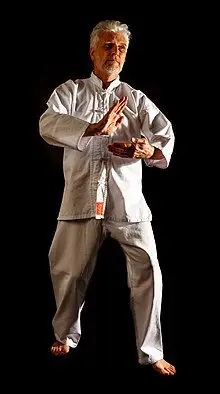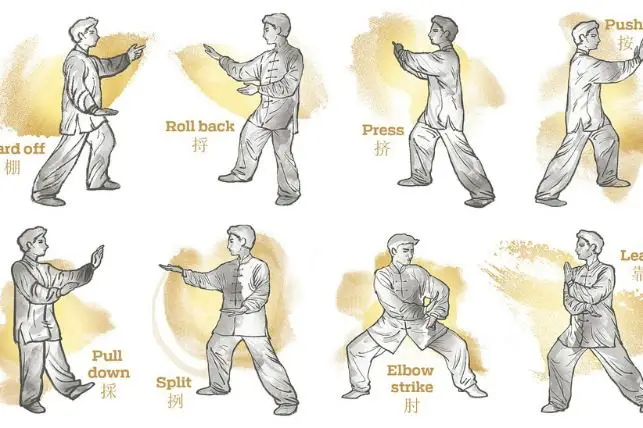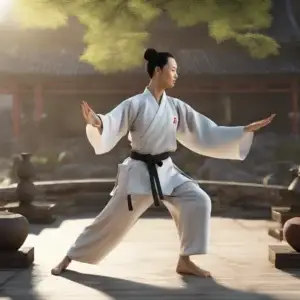
Taijiquan, also known as Tai Chi, is a traditional Chinese martial art renowned for its graceful movements, health benefits, and profound philosophical underpinnings. Within the realm of Taijiquan, one finds a set of fundamental principles and techniques known as Bafa Wubu or Shi San Shi. These principles and movements serve as the foundation for practitioners to develop their skills, cultivate internal energy, and embody the essence of Taijiquan. In this article, we will delve into the significance and practices associated with Bafa Wubu in Taijiquan.
The Meaning of Bafa Wubu
Bafa Wubu, translated as “Eight Methods and Five Steps,” encapsulates the core elements of Taijiquan. The term “Bafa” refers to the eight methods, which represent the various techniques and applications employed in Taijiquan. These methods encompass striking, pushing, pulling, splitting, elbowing, shouldering, leaning, and covering. Each method embodies specific energy expressions and combative strategies.
“Wubu” refers to the five steps or footwork patterns, which are integral to Taijiquan practice. These footwork patterns include advancing, retreating, shifting left, shifting right, and remaining centered. By mastering these footwork patterns, practitioners develop agility, balance, and the ability to smoothly transition between movements.
Together, the eight methods and five steps of Bafa Wubu provide a comprehensive framework for Taijiquan practitioners to explore and apply the principles of this martial art.
The Essence of Shi San Shi
Within the Bafa Wubu framework, the Shi San Shi, or Thirteen Techniques, take center stage. The Shi San Shi represent a sequence of thirteen fundamental movements that embody the principles of Taijiquan. Each technique incorporates the principles of Yin and Yang, rootedness, relaxation, and whole-body coordination. The Shi San Shi acts as a roadmap for practitioners to refine their skills and deepen their understanding of Taijiquan’s essence.
The Thirteen Techniques are:
- Peng (ward-off)
- Lu (roll-back)
- Ji (press)
- An (push)
- Cai (pluck)
- Lie (split)
- Zhou (elbow)
- Kao (shoulder)
- Lü (lean)
- Jin (advance)
- Tui (retreat)
- Gu (advance to the left)
- Pan (advance to the right)
Each technique contains specific energy dynamics and body alignments that practitioners must embody. The constant practice and refinement of these techniques lead to the development of internal power, relaxation, and a deep understanding of martial principles.
Application and Benefits
The study of Bafa Wubu and Shi San Shi goes beyond mere physical movements. It is a holistic approach that integrates the physical, mental, and energetic aspects of Taijiquan. Through diligent practice, practitioners gain several benefits, including:
- Enhanced Body Awareness: The detailed study of Bafa Wubu and Shi San Shi cultivates an acute awareness of body alignment, weight distribution, and energy flow, leading to improved posture, balance, and coordination.
- Internal Energy Cultivation: Taijiquan emphasizes the cultivation of internal energy, often referred to as Qi or Chi. By practicing the principles of Bafa Wubu and Shi San Shi, practitioners learn to harness and circulate Qi, promoting overall health, vitality, and a sense of harmony.
- Martial Applications: While Taijiquan is renowned for its health benefits, it remains a martial art at its core.
It is always good to see a different perspective on technique. There are many variations because this art is not static. It is ever-moving yet always similar. As can be seen in the below video.






